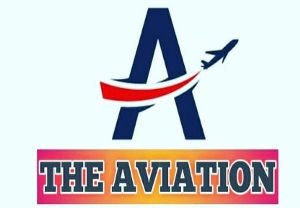LCC Carriers’ Game Changer: The Flying Pencil – Airbus A321XLR

The Airbus A321XLR, often dubbed “The Flying Pencil,” is revolutionizing the low-cost carrier (LCC) market by redefining long-haul travel. With its unmatched range of 8,700 km (4,700 nautical miles) and fuel-efficient design, the A321XLR enables LCCs to venture into routes traditionally dominated by wide-body aircraft, all while maintaining the economic advantages of a narrow-body jet.
Let’s Have a look on technical overview of XLR and how it will benefit LCC.

Revolutionary Range and Efficiency
The A321XLR boasts an impressive range of up to 8,700 kilometers (4,700 nautical miles), making it the longest-range single-aisle aircraft in history. This range allows airlines to operate direct flights between cities that were previously viable only with wide-body jets. Destinations such as New York to Rome or Dubai to Western Europe are now accessible with a narrow-body plane.
What sets the A321XLR apart is its unparalleled fuel efficiency. Leveraging next-generation engines, advanced aerodynamics, and a lightweight design, the aircraft consumes up to 30% less fuel per seat than older-generation aircraft like the Boeing 757. This efficiency significantly reduces operating costs, aligning with the industry’s push toward sustainable operations and lower emissions.
Design Innovations
Airbus has implemented several engineering advancements to achieve the A321XLR’s extended range and improved performance. These include:

1. Rear Centre Tank (RCT)
- A new Rear Centre Tank (RCT) is the linchpin of the aircraft’s design. Unlike conventional additional fuel tanks, the RCT is seamlessly integrated into the fuselage, holding up to 12,900 liters of fuel without compromising cargo space. This innovation is critical to achieving the extended range.
2. Reinforced Landing Gear
- To handle the increased fuel load and the resulting higher Maximum Takeoff Weight (MTOW) of 101 tons, Airbus reinforced the A321XLR’s landing gear. This structural enhancement supports the aircraft’s long-haul capabilities.
3. Aerodynamics and Engines
- The A321XLR features advanced aerodynamics, including large Sharklets that reduce drag and improve fuel efficiency.
- Airlines can choose between CFM International LEAP-1A or Pratt & Whitney PW1100G-JM engines, both designed for superior fuel economy and lower noise emissions.
4. Cabin Comfort

- The A321XLR incorporates Airbus’s Airspace Cabin, designed to enhance passenger comfort on long-haul flights. Features include:
- Larger overhead bins.
- Quieter interiors.
- Customizable LED mood lighting.
- Improved air circulation and humidity levels.
Thrust Bump incorporated in XLR:
A thrust bump in the Airbus A321XLR provides a temporary increase in engine thrust beyond standard levels, primarily during takeoff or go-around. It enhances performance in challenging conditions like short or high-altitude runways and hot weather, allowing the aircraft to carry more payload or fuel. This feature is vital for the XLR’s ultra-long-range missions, enabling it to maximize its 4,700 nm range. Engines like the CFM LEAP-1A or Pratt & Whitney PW1100G are designed to safely handle the higher thrust for short durations without compromising reliability. Thrust bump ensures operational flexibility, particularly for takeoffs at maximum weight, and is carefully certified to balance performance with engine wear management, maintaining safety and efficiency.
Efficiency Meets Versatility

The A321XLR is an ideal choice for airlines looking to balance operational efficiency with route flexibility. It enables point-to-point travel, bypassing traditional hub-and-spoke models. Airlines can connect secondary cities directly, avoiding congested hubs and offering passengers more convenient travel options.
The aircraft’s efficiency extends to its compatibility with Sustainable Aviation Fuels (SAF), making it a forward-looking choice for carriers prioritizing environmental goals. Additionally, its 95% parts commonality with the A320 family simplifies maintenance and reduces training costs for airlines already operating Airbus narrow-body aircraft.
“The Airbus A321XLR: A Smart Alternative to Wide-Body Aircraft During Off-Peak Seasons”
The Airbus A321XLR empowers low-cost carriers (LCCs) to compete effectively with full-service airlines, particularly on long-haul routes. Equipped with Airbus’s innovative Airspace Cabin, the aircraft enhances passenger experience through features like larger overhead bins, quieter interiors, and customizable mood lighting. These upgrades allow LCCs to offer a more premium travel experience while maintaining competitive pricing.
- Right-Sizing Aircraft: Wide-body jets like the A330 or A350 typically seat 250–300 passengers. While these larger aircraft are ideal for peak travel seasons, they may operate with low load factors during off-peak periods.
- The A321XLR, with a seating capacity of 182–244 passengers, is better suited for routes with lower seasonal demand, ensuring more efficient use of capacity.
- Efficient Utilization: LCCs can operate the A321XLR on short-haul, high-demand routes during peak hours and switch to long-haul routes during off-peak times, maximizing aircraft utilization.
- Fleet Commonality: The A321XLR shares 95% parts commonality with other A320 family aircraft, simplifying training, maintenance, and operations for airlines already operating Airbus narrow-body jets.
Operators Embracing the A321XLR

The A321XLR has attracted a diverse group of operators, from full-service carriers to low-cost airlines. Over 25 airlines have placed orders, with notable customers including:
IndiGo: India’s largest airline, set to use the XLR to expand its international network to Africa and Southeast Asia. IndiGo could offer flights from India to Africa or Southeast Asia.
- American Airlines: With 50 orders, American plans to use the A321XLR for transatlantic routes, replacing aging Boeing 757s.
- United Airlines: Another major U.S. carrier intending to expand its European network using the XLR.
- Wizz Air: A low-cost carrier aiming to connect Europe with longer-range destinations in the Middle East and Asia.
- Qantas: Leveraging the aircraft’s range for routes between Australia and Asia.
- Aer Lingus and JetBlue: Using the XLR for transatlantic operations, offering competitive fares on long-haul routes.
Impact on Low-Cost Carriers
The A321XLR is particularly transformative for low-cost carriers (LCCs). With its extended range and cost-effective operations, LCCs can venture into long-haul markets while maintaining their lean cost structures. The aircraft enables point-to-point flights on routes previously dominated by wide-body jets, offering passengers affordable long-haul travel options.
For example, Wizz Air plans to use the A321XLR to connect secondary European cities to distant destinations, while JetBlue is expanding its transatlantic presence with this model. These moves demonstrate how LCCs can leverage the A321XLR to challenge traditional full-service airlines.
Competitors in the Market
While the A321XLR stands out, it faces competition from:
- Boeing 737 MAX 10: A similar narrow-body aircraft with lower range but competitive operating costs.
- COMAC C919 and Irkut MC-21: Emerging competitors from China and Russia, though they lack the XLR’s range and global market acceptance.
- Embraer E2 Series: Focused on regional markets, with a smaller capacity and shorter range.
Despite these challengers, none currently match the A321XLR’s combination of range, efficiency, and proven reliability.
Shaping the Future of Air Travel
The A321XLR is more than an aircraft—it’s a disruptor. By bridging the gap between narrow-body and wide-body operations, it allows airlines to reimagine their networks. Routes that were once economically unfeasible now become profitable. Secondary cities gain global connectivity, and passengers benefit from more direct flights at competitive prices.
As aviation moves toward sustainability, the A321XLR aligns perfectly with industry goals. Its fuel efficiency, range, and versatility make it a cornerstone of future airline fleets. Whether it’s unlocking new markets or redefining long-haul travel, the A321XLR is setting a new standard for what a narrow-body jet can achieve.





